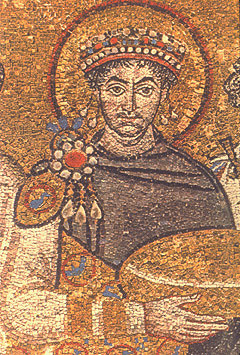
Perhaps it will make its way to the Discovery Channel or History International. I'm presently reading "Pride of Carthage" by David Anthony Durham so the BBC program would make a nice supplement to my reading.
Subsection of Roman Times:
A weblog of links to and abstracts from academic presentations on the Roman Empire

Second, the issue of whether the ancients who engaged in worshipping the emperors believed the emperor to be human or divine, which reflects modern ontological concerns, has also contributed to scholars' undermining the religious character of imperial cults.(10) From a modern perspective it is difficult to comprehend that what we as moderns know to be human could be worshipped as a god by ancients, and, as a result, a modern scholar is more inclined to suggest that apparent worship of a human as divine must be superficial (or simply political in the case of emperors). But an approach which focusses primarily on the ontological status of the emperors is inappropriate since we cannot get into the minds of ancients to see what they actually believed, and, more importantly as the present essay begins to show, the vast majority of the evidence that we do have for local imperial cult activities and rituals shows that the characteristics of and practices connected with worship of the emperors virtually coincide with those connected with worship of more traditional deities.(11) Moreover, the evidence [323] suggests that in practice, within the context of imperial cults, the emperors functioned as gods.(12)
Third, it is quite common in modern contexts to measure true religiosity and piety in terms of emotion or feelings and this tendency sometimes extends to scholars' assessments of ancient religion.(13) Though there are certainly some cases where religious feelings are very strongly expressed by individuals in antiquity,(14) piety (eusebeia) and religiosity were more frequently concerned with the proper performance of cultic acts to maintain fitting relations between communities and the gods rather than with the inner feelings of individuals.(15) This does not make such activity any less genuinely religious within that context.(16)

'Justinian had not created the disease, but he created the pandemic, which followed the movements of men and goods in Justinian?s resurrected empire. Without the empire, the bread dole, the huge shipments of grain and cloth from Africa, it is difficult to imagine how the First Pandemic could ever have erupted.'"


 delicacies,
delicacies,
 on funeral markers, two realms beleaguered by the same problems as textual evidence:
on funeral markers, two realms beleaguered by the same problems as textual evidence:


Hoods, eggs, and parchment scrolls
The genius cucullatus takes on a general form that is modified and embellished according to localized interpretations of the deity's power. To draw up a list of features each figure displays would be short; they wear thick hooded cloaks and are found in pontentially sacred contexts. The cloaks vary in length, number of folds, extent of body coverage, and hood shape. Although no pattern has been determined among the different cloak styles, other differences between the figures are partly linked to the regions in which they were found. Most scholars agree that the genii cucullati of Britain predominantly appear in triads, are small of stature, and often carry eggs, or other fertility attributes (Heichelheim 192-3). In contrast, the cucullati of the European continent appear singularly, as giants and dwarves, and occasionally imply phallus worship(193). In both regions the deities are often found clutching parchments or scrolls, which may signify wisdom (Jenkins 88) or the secrets of healing lore (Toynbee, 1957 158)."